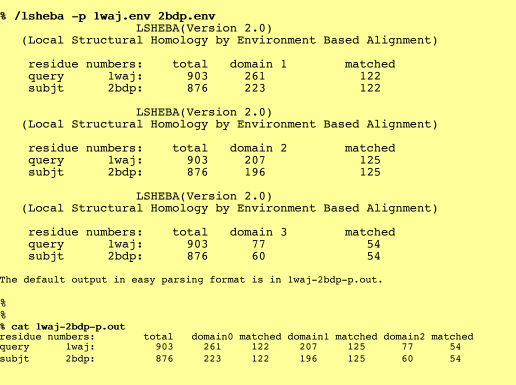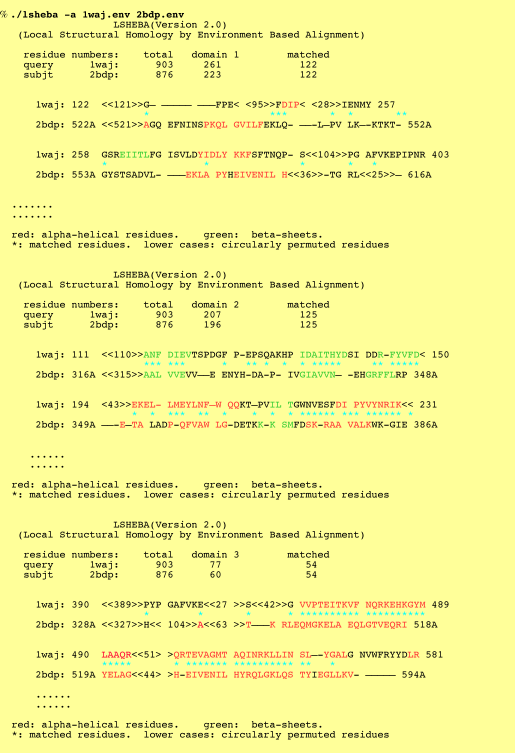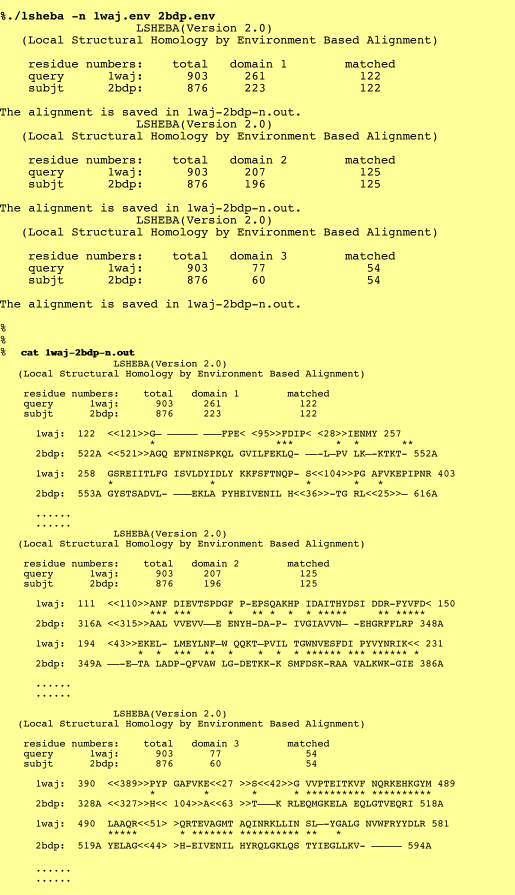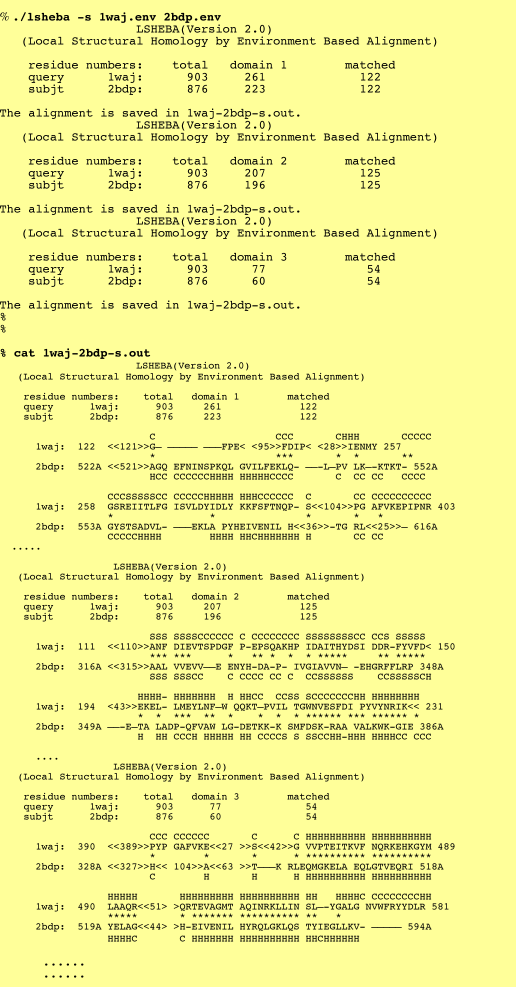
If the PDB file is from NMR experiment, there might be more than one model of the structure in that pdb file. LSHEBA only takes the first model and converts it into [*.env] format.
%./lsheba -e (*.pdb) 
The (*.env) file is created in the same directory and the content is like this:

It shows the number of residues in each protein, in each domain and those with C-alpha distance less than 3.5 angstroms. The output is on the screen.
%./lsheba (query.env/.pdb) (subject.env/.pdb)

To parse the result to a file, use -p option. Default output will be displayed on the screen and the result in a easy parsing format will be stored in the file.
%./lsheba -p (query.env/.pdb) (subject.env/.pdb)

LSHEBA has several different alignment output options. Users can view the alignment output on the screen or save the alignment output in a file with or without secondary structure information. In brief, LSHEBA groups local alignments into a domain and if one domain contains more than one chain, the alignments are displayed separately. In each domain, if there are more than 20 residues in a continuous sequence that are not matched with subject sequence, those un-matched ones are not considered to be in that domain and are represented in <<n>> , where n is the number of unmatched residues. LSHEBA can take either (.pdb) file or (.env) file and the output is either stdout or in a file. The naming convention of the output file is (query structure file name) - (subject structure file name) - (option).out.
1. Alignment output with color on the screen to indicate different kinds of secondary structures:
% ./lsheba -a (query.env/.pdb) (subject.env/.pdb) 
2. Alignments saved in the file without secondary structure code:
Default output will be displayed on the screen and the alignments will be saved in the file.
%./lsheba -n (query.env/.pdb) (subject.env/.pdb)

3. Alignments with secondary structure information saved in the file:
Default output will be displayed on the screen and the alignments with secondary structure code: C for Coil, H for Helix, S for Sheet and T for turns, will be saved in the file. Back to Manual
% ./lsheba -s (query.env/.pdb) (subject.env/.pdb) 